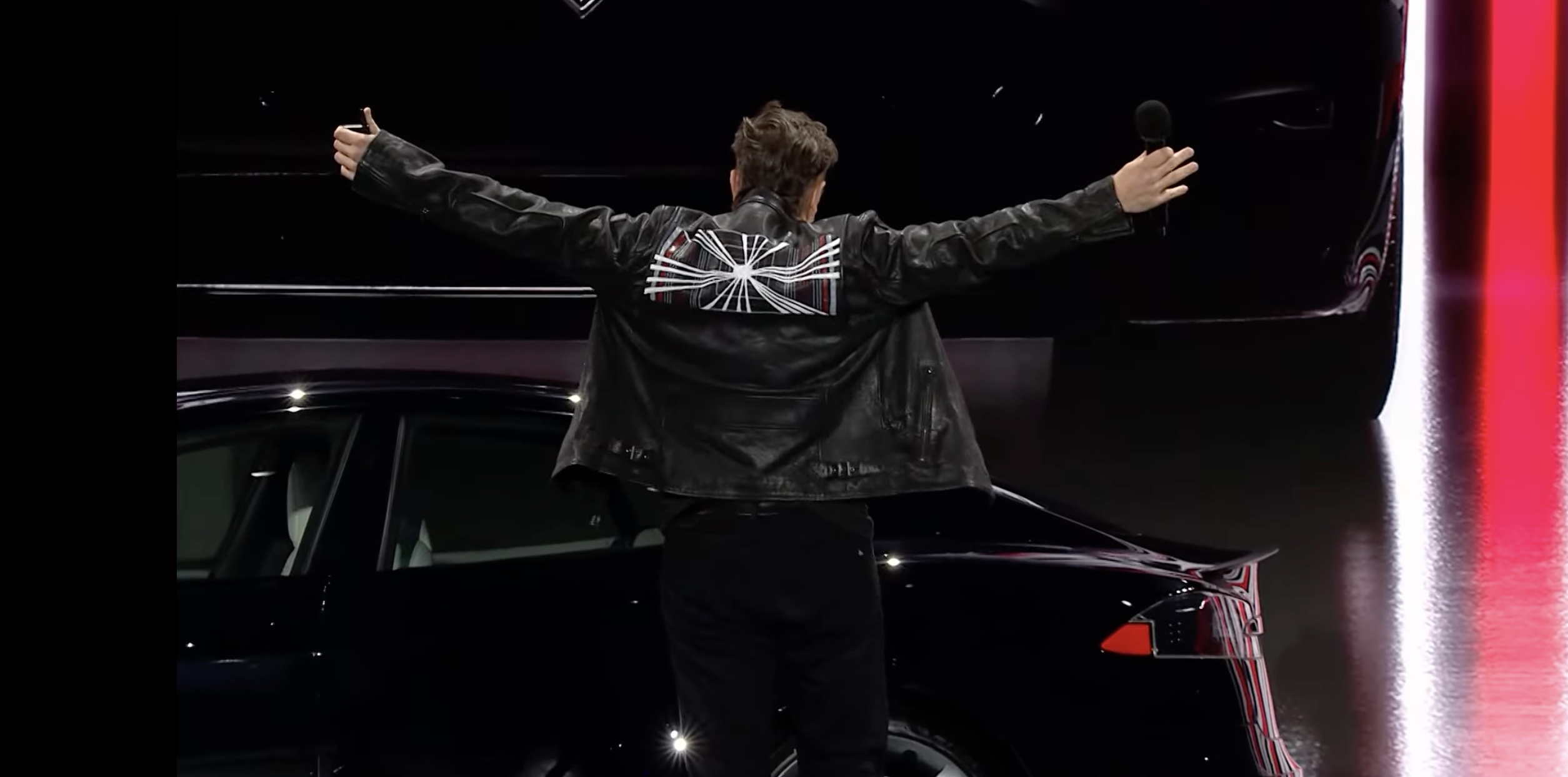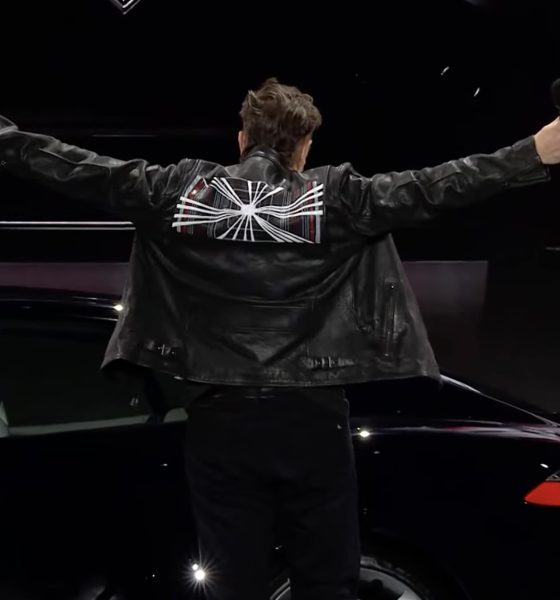

News
Tesla’s Elon Musk hints that he’s working on a “Master Plan Part 3”
Tesla CEO Elon Musk recently revealed something extremely exciting: he is currently working on Master Plan, Part 3. Musk’s Master Plan, two of which have already been published over the years, outlines his primary long-term goals for Tesla, as the company evolves from a simple startup automaker to something much more.
Musk’s first Master Plan pretty much flew under the radar, though it did reveal the company’s strategy for the coming years. Written in 2006, Musk’s Master Plan, Part 1 discussed how the company intends to enter the affordable vehicle market by gradually evolving its lineup from expensive sports cars like the original Roadster to more affordable, mainstream vehicles like the Model 3. Musk’s first Master Plan also mentioned how electric vehicle owners could become energy positive by charging their EVs from renewable sources like the sun.
Master Plan, Part 2 came ten years later, a time when the company was already producing the Model S and Model X. Published in 2016, Master Plan, Part Deux still highlighted that Tesla intends to enter all vehicle segments like heavy-duty trucks, pickups, and passenger-density urban transport. However, it also emphasized the importance of Tesla Energy and its solar products, as well as the value of advanced driver-assist systems like Autopilot. Musk also touched on the idea of the Tesla Network, which would be possible once autonomous driving is achieved.
Needless to say, Tesla has not completed Musk’s second Master Plan yet. While all the goals highlighted by the CEO in his first Master Plan were met with the launch and ramp of the Model 3, the goals indicated in Master Plan, Part Deux have proven to be far more challenging. Vehicles like the Tesla Semi and Cybertruck are still waiting to be produced, and the Solar Roof ramp has been rife with delays. The deployment of FSD has made some progress with the FSD Beta program, but true autonomy still seems to be a distant goal.
This does not mean to say that Elon Musk’s Master Plan, Part 3, would be ill-timed, however. Musk definitely has a vision for Tesla, and he knows where the company is going. His long tenure as Tesla’s CEO also provides him with a pretty good eye as to what the company could achieve in the future. With this in mind, and while details of Master Plan, Part 3 are yet to be released, speculations are abounding about what Musk’s third grand plan would entail. Some TSLA bulls that have watched the company for years have suggested that Master Plan, Part 3 may involve Tesla’s transition to an Artificial Intelligence and data company.
A focus on AI is not farfetched at all for Tesla, considering the company’s projects like Optimus and the wealth of data it is gathering from its fleet of vehicles every day. And it doesn’t even have to be limited to electric cars only. With products like its humanoid robot, Tesla’s AI projects could expand to a variety of industries. This is something that Musk seems to be quite excited about, as hinted at in a recent post on Twitter. The CEO highlighted that he has so much respect for those who do honest work in creating useful products and services for their fellow humans.
“Working hard to make useful products & services for your fellow humans is deeply morally good. I have so much respect for the associates doing an honest day’s work at Tesla or SpaceX building & servicing cars, rockets, Starlinks, batteries, solar & many other things,” Musk wrote.
Do you have any idea what Master Plan, Part 3 will entail? Sound off in the comments section below.
Don’t hesitate to contact us with news tips. Just send a message to simon@teslarati.com to give us a heads up.

News
Tesla is not sparing any expense in ensuring the Cybercab is safe
Images shared by the longtime watcher showed 16 Cybercab prototypes parked near Giga Texas’ dedicated crash test facility.

The Tesla Cybercab could very well be the safest taxi on the road when it is released and deployed for public use. This was, at least, hinted at by the intensive safety tests that Tesla seems to be putting the autonomous two-seater through at its Giga Texas crash test facility.
Intensive crash tests
As per recent images from longtime Giga Texas watcher and drone operator Joe Tegtmeyer, Tesla seems to be very busy crash testing Cybercab units. Images shared by the longtime watcher showed 16 Cybercab prototypes parked near Giga Texas’ dedicated crash test facility just before the holidays.
Tegtmeyer’s aerial photos showed the prototypes clustered outside the factory’s testing building. Some uncovered Cybercabs showed notable damage and one even had its airbags engaged. With Cybercab production expected to start in about 130 days, it appears that Tesla is very busy ensuring that its autonomous two-seater ends up becoming the safest taxi on public roads.
Prioritizing safety
With no human driver controls, the Cybercab demands exceptional active and passive safety systems to protect occupants in any scenario. Considering Tesla’s reputation, it is then understandable that the company seems to be sparing no expense in ensuring that the Cybercab is as safe as possible.
Tesla’s focus on safety was recently highlighted when the Cybertruck achieved a Top Safety Pick+ rating from the Insurance Institute for Highway Safety (IIHS). This was a notable victory for the Cybertruck as critics have long claimed that the vehicle will be one of, if not the, most unsafe truck on the road due to its appearance. The vehicle’s Top Safety Pick+ rating, if any, simply proved that Tesla never neglects to make its cars as safe as possible, and that definitely includes the Cybercab.
Elon Musk
Tesla’s Elon Musk gives timeframe for FSD’s release in UAE
Provided that Musk’s timeframe proves accurate, FSD would be able to start saturating the Middle East, starting with the UAE, next year.

Tesla CEO Elon Musk stated on Monday that Full Self-Driving (Supervised) could launch in the United Arab Emirates (UAE) as soon as January 2026.
Provided that Musk’s timeframe proves accurate, FSD would be able to start saturating the Middle East, starting with the UAE, next year.
Musk’s estimate
In a post on X, UAE-based political analyst Ahmed Sharif Al Amiri asked Musk when FSD would arrive in the country, quoting an earlier post where the CEO encouraged users to try out FSD for themselves. Musk responded directly to the analyst’s inquiry.
“Hopefully, next month,” Musk wrote. The exchange attracted a lot of attention, with numerous X users sharing their excitement at the idea of FSD being brought to a new country. FSD (Supervised), after all, would likely allow hands-off highway driving, urban navigation, and parking under driver oversight in traffic-heavy cities such as Dubai and Abu Dhabi.
Musk’s comments about FSD’s arrival in the UAE were posted following his visit to the Middle Eastern country. Over the weekend, images were shared online of Musk meeting with UAE Defense Minister, Deputy Prime Minister, and Dubai Crown Prince HH Sheikh Hamdan bin Mohammed. Musk also posted a supportive message about the country, posting “UAE rocks!” on X.
FSD recognition
FSD has been getting quite a lot of support from foreign media outlets. FSD (Supervised) earned high marks from Germany’s largest car magazine, Auto Bild, during a test in Berlin’s challenging urban environment. The demonstration highlighted the system’s ability to handle dense traffic, construction sites, pedestrian crossings, and narrow streets with smooth, confident decision-making.
Journalist Robin Hornig was particularly struck by FSD’s superior perception and tireless attention, stating: “Tesla FSD Supervised sees more than I do. It doesn’t get distracted and never gets tired. I like to think I’m a good driver, but I can’t match this system’s all-around vision. It’s at its best when both work together: my experience and the Tesla’s constant attention.” Only one intervention was needed when the system misread a route, showcasing its maturity while relying on vision-only sensors and over-the-air learning.
News
Tesla quietly flexes FSD’s reliability amid Waymo blackout in San Francisco
“Tesla Robotaxis were unaffected by the SF power outage,” Musk wrote in his post.

Tesla highlighted its Full Self-Driving (Supervised) system’s robustness this week by sharing dashcam footage of a vehicle in FSD navigating pitch-black San Francisco streets during the city’s widespread power outage.
While Waymo’s robotaxis stalled and caused traffic jams, Tesla’s vision-only approach kept operating seamlessly without remote intervention. Elon Musk amplified the clip, highlighting the contrast between the two systems.
Tesla FSD handles total darkness
The @Tesla_AI account posted a video from a Model Y operating on FSD during San Francisco’s blackout. As could be seen in the video, streetlights, traffic signals, and surrounding illumination were completely out, but the vehicle drove confidently and cautiously, just like a proficient human driver.
Musk reposted the clip, adding context to reports of Waymo vehicles struggling in the same conditions. “Tesla Robotaxis were unaffected by the SF power outage,” Musk wrote in his post.
Musk and the Tesla AI team’s posts highlight the idea that FSD operates a lot like any experienced human driver. Since the system does not rely on a variety of sensors and a complicated symphony of factors, vehicles could technically navigate challenging circumstances as they emerge. This definitely seemed to be the case in San Francisco.
Waymo’s blackout struggles
Waymo faced scrutiny after multiple self-driving Jaguar I-PACE taxis stopped functioning during the blackout, blocking lanes, causing traffic jams, and requiring manual retrieval. Videos shared during the power outage showed fleets of Waymo vehicles just stopping in the middle of the road, seemingly confused about what to do when the lights go out.
In a comment, Waymo stated that its vehicles treat nonfunctional signals as four-way stops, but “the sheer scale of the outage led to instances where vehicles remained stationary longer than usual to confirm the state of the affected intersections. This contributed to traffic friction during the height of the congestion.”
A company spokesperson also shared some thoughts about the incidents. “Yesterday’s power outage was a widespread event that caused gridlock across San Francisco, with non-functioning traffic signals and transit disruptions. While the failure of the utility infrastructure was significant, we are committed to ensuring our technology adjusts to traffic flow during such events,” the Waymo spokesperson stated, adding that it is “focused on rapidly integrating the lessons learned from this event, and are committed to earning and maintaining the trust of the communities we serve every day.”








